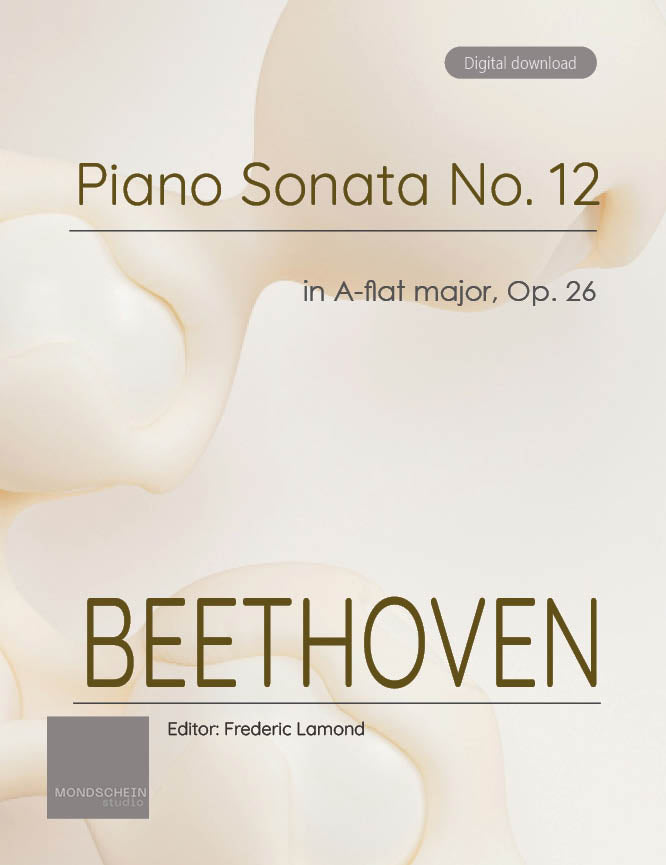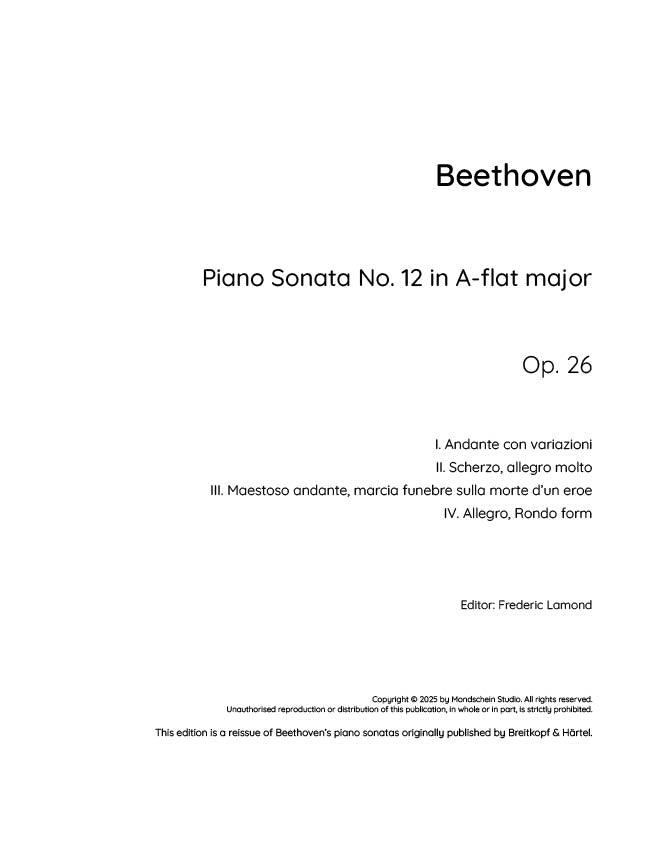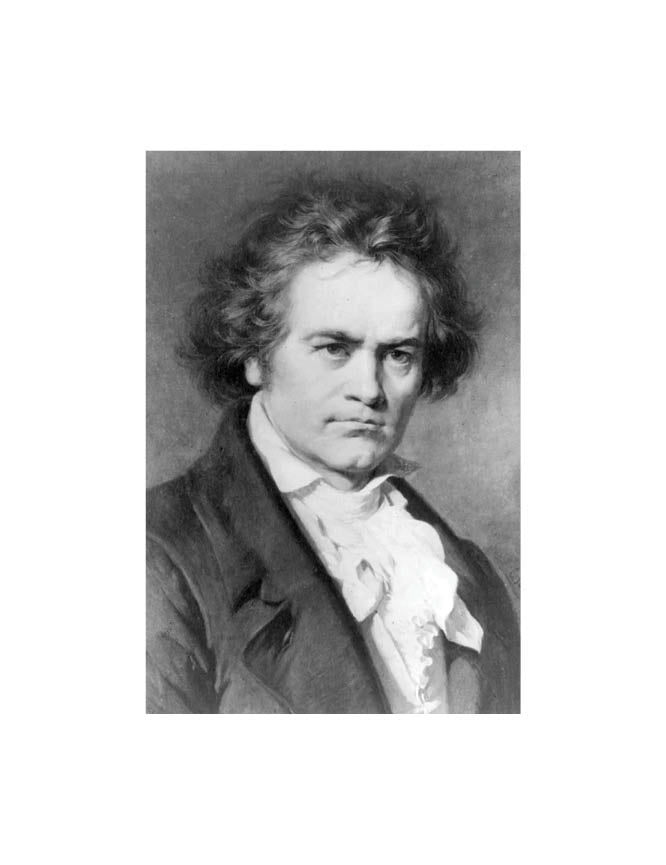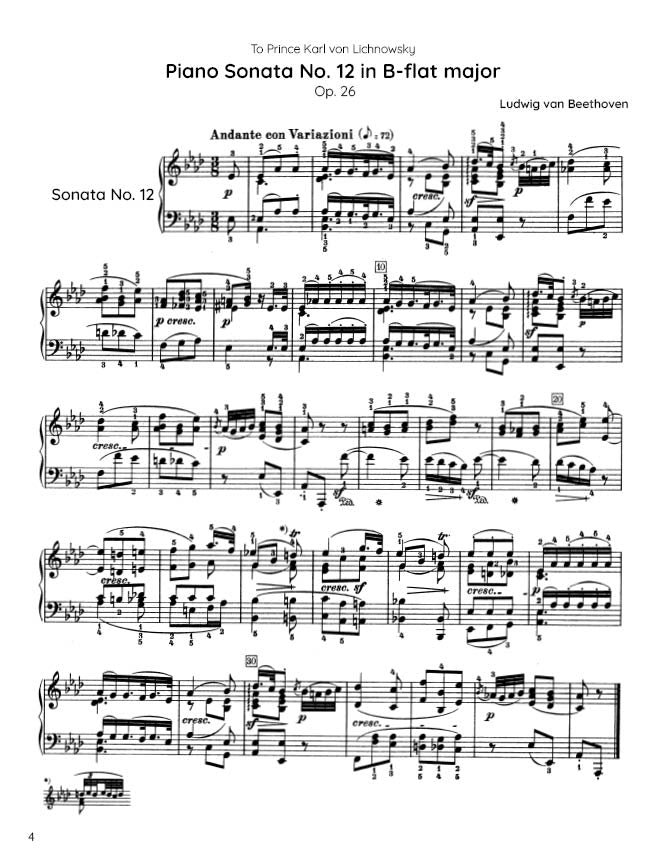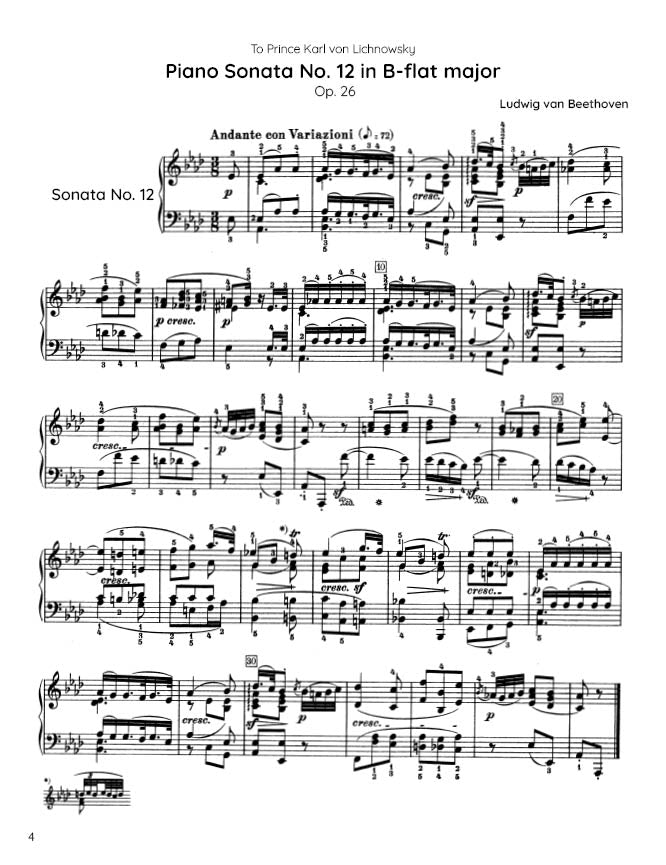Beethoven - Piano Sonata No. 12, Op. 26 "Funeral March" (PDF Sheet Music / Digital Download)
Beethoven - Piano Sonata No. 12, Op. 26 "Funeral March" (PDF Sheet Music / Digital Download)
Couldn't load pickup availability
Explore the unique and innovative landscape of Ludwig van Beethoven's Piano Sonata No. 12 in A-flat Major, Op. 26, often referred to as the "Funeral March" Sonata. Composed between 1800 and 1801, this work stands as a pivotal moment in Beethoven's development, breaking away from traditional sonata form and showcasing his burgeoning experimentation.
Unlike many of his sonatas, Op. 26 opens not with an Allegro, but with a captivating set of variations on a gentle, singing theme – a testament to Beethoven's growing mastery of this form. This is followed by a sprightly Scherzo that dances with wit and rhythmic vitality.
The heart of the sonata, and the source of its popular nickname, lies in the third movement: a profoundly moving and solemn "Marcia funebre sulla morte d'un Eroe" (Funeral March on the Death of a Hero). This elegiac and powerful movement, later orchestrated by Beethoven himself for a stage work, predates the famous funeral march in his "Eroica" Symphony and offers a profound expression of grief and solemnity.
The sonata concludes with a light-hearted and effervescent Allegro finale, providing a striking contrast to the preceding mournful march and demonstrating Beethoven's characteristic emotional range. Op. 26 is a testament to Beethoven's willingness to push boundaries, offering a compelling blend of formal innovation, emotional depth, and dazzling pianistic display.
About the editor
Frederic Lamond occupies a significant position in the historical lineage of Beethoven interpreters, his influence extending profoundly to the piano sonatas. A direct pupil of Franz Liszt—who himself maintained connections to Beethoven's circle through Carl Czerny—Lamond was a dedicated custodian of a grand tradition in Beethoven performance. His interpretations, documented in recordings from the 1920s and 1930s, are often characterised by their robust character, dramatic contrasts, and an almost improvisatory freedom, reflecting a less overtly "perfected" but deeply personal engagement with the music.
Crucially, Lamond's legacy is also cemented by his own 1923 edition of the complete Beethoven Piano Sonatas, published by Breitkopf & Härtel. This edition stands apart from many contemporary "instructive editions" by its meticulous respect for the musical text; Lamond chose not to directly alter the printed notes. Instead, his contribution lies in the provision of insightful fingerings and illuminating interpretive suggestions, often presented as judicious footnotes. These annotations guide pianists on nuanced aspects such as ornamentation and the precise execution of pauses, offering a unique and invaluable historical perspective on performance practice. Lamond's edition thus serves as an essential resource for serious musicians seeking a profound understanding of Beethoven's keyboard masterworks.
This Mondschein Studio edition is a reissue of music originally published by Breitkopf & Härtel.
Share
